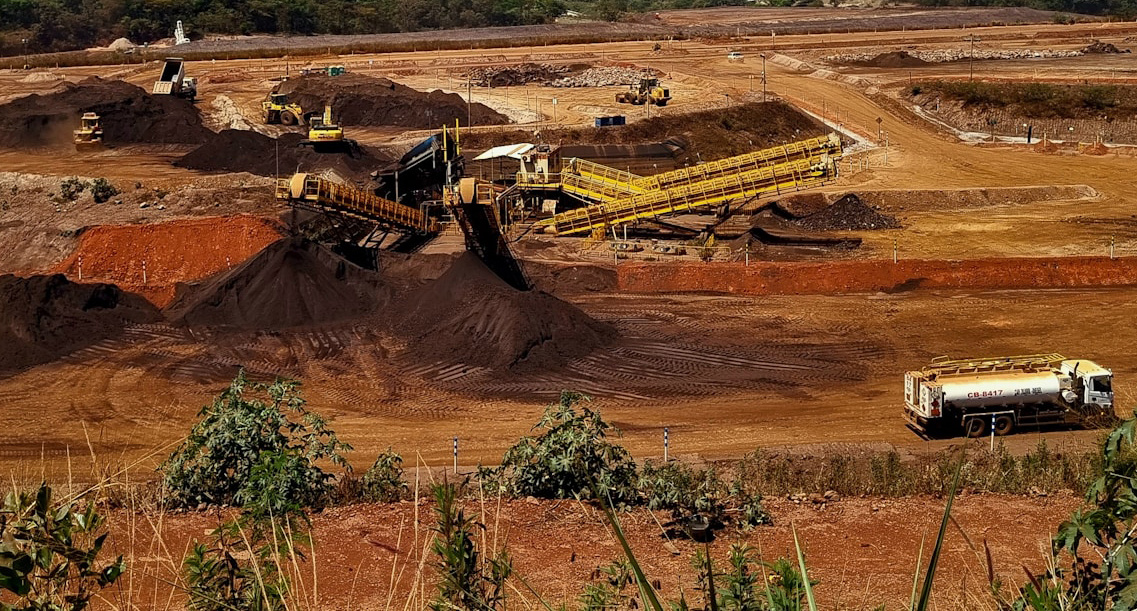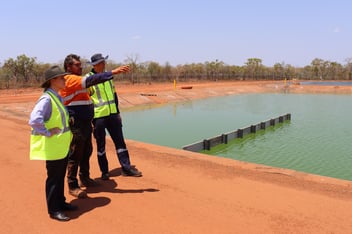Mining and water management in the Pilbara: a new way forward

Iron ore mining in the Pilbara over the past two decades has required a huge amount of dewatering of aquifers, with much of the water displaced into creeks. But one leading water professional is advocating for a more considered approach to groundwater management moving forward.
GHD Technical Director Bob Kinnell said the history of dewatering for mining in the Pilbara has left a legacy of consequences and learnings that must now be taken into consideration in terms of sustainably managing groundwater resources in the region.
“Prior to 2007, water was used for dust suppression and drinking. Post-2007 as demand from China increased rapidly, there was a massive increase in dewatering conducted by the mining industry to access ore bodies below the water table,” he said.
“The mindset was tactical, bringing new mines on line quickly to meet increasing demand. The water needed to be removed to access ore and, with no demand for this excess water, disposal to creeks was the de facto solution.
“The volume of water removed from the ground is significant; I am talking about tens of gigalitres per year.”
Kinnell said we are now at a point where it is important to start taking account of the impact of dewatering on the catchments in the Pilbara, but also to consider how to plan for any future dewatering, as well.
“The region gets the odd cyclone, but otherwise the aquifers do not get any significant recharge. The volume of water removed is much bigger than the volume of water coming in. Some of the consequences of this movement will last for a long time,” he said.
“A lot of the impact has already happened, but how do we limit future impacts and what are the options to work with others to manage them?”
In 2009, the state government released the Pilbara Water in Mining Guideline, Kinnell said, which instigated some thinking around finding uses for the groundwater. But, once mining operations slow down or stop completely, the supply created by dewatering disappears, too.
“Nowadays, we are in a time of transition. There is no rapid expansion of mining anymore, so we are in a sustaining world. But are our strategies and tools aligned with our mindset?” he said.
“We are now entering a phase where we need to take a look at our tools and methods, and think clearly about how we are moving into the future when it comes to groundwater management in the Pilbara.”
A different approach
While dewatering approaches in mining have so far been tactical, Kinnell said industry has realised it needs to better understand and manage water resources considering the environmental, social and cultural aspects.
“Many years ago, my work was in sustainability in the mining sector. Everyone thought I was crazy. Things are different now, the world is rightly changing. There are a lot more voices being heard, rather than just the miner and the regulator,” he said.
“Traditional Owners have come to the fore, and there is now an expectation by Traditional Owners and miners to consider the cultural value of this water. We are now moving away from an attitude of ‘we will worry about it later’. Everyone is wising up to this now.”
While putting the water into a creek was once the solution, this approach is now the last resort answer, Kinnell said, with the more sustainable approaches creating additional complexities to understand.
“We can see these challenges played out now in areas where perennial creek discharge has created new ecosystems over the past 20 years,” he said.
“The community has become used to the new perennial environments created, but it’s not actually sustainable. It has to change – at some point those pumps moving water from the ground will be turned off.
“Now the challenge is to transition the areas back into ephemeral ecosystems.”
How future dewatering is managed will influence how any new operations come online, Kinnell said, with managed aquifer recharge becoming one of the solutions on the table.
“But there’s the question of where to put the water and whether or not aquifer recharge will just recirculate the water straight back into your operation, so there is the question of whether or not to carry water outside its catchment,” he said.
“It’s really important to do the science and engineering to manage expectations. People come up with a lot of ideas, but we need to think through the most realistic outcome. This is about having an honest conversation about the future, rather than persisting with short-term solutions, like we used to.”
Working together
Kinnell said one significant shift for the better is the push for collaboration, with mining operators all expected to work together, and also with communities, in order to make the most of the information and learnings available.
“Two decades ago, sharing information between different mining companies was very difficult due to legal considerations, even if all you were talking about was water table information. There’s an understanding now that there is a benefit for mining operators to share information,” he said.
“Working together is the only way we will create more sustainable outcomes, it’s the way of the future. This has been driven by a renewed interest in the protection of ecosystems by the general public, as well as a lot of hard work and activism by Traditional Owners.
“There has been a massive amount of science done over the years during the approvals processes, but once an approval is granted it’s been frustrating to see the scientific insights not being better leveraged.
“The missed opportunity to develop the regional knowledge base means that when another entity proposes a different project next door, they have had to do all the science all over again.
“That seems crazy to me, and rather wasteful. Fortunately, we are seeing a lot more support for transparency, collaboration and communication. This is a good thing.”
Adaptive planning
While adaptive pathways planning is a method being explored across many areas of the water sector, Kinnell said the approach offers great promise for managing groundwater for future mining operations, too.
“Adaptive planning is a way of understanding where we might go in future and challenge ourselves to account for different scenarios. We can sequence and plan different decisions that may need to be made, depending on how things play out,” he said.
“It’s also a really collaborative methodology. It’s a mindset that people are going to have to get into when doing these big future projects, especially when we are talking about water.”
Adaptive pathways planning needs to be championed, Kinnell said, particularly for regions like the Pilbara.
“This approach isn’t all about what we will use the water for, it’s also a tool to bring everybody on board with what is being planned. It means that when we plan operations, we are also considering what it will mean for other entities in the region,” he said.
“It’s about understanding the operating environment. We can put a water lens on it, and plan for water management options under certain scenarios, and how entities can work together on that.
It’s about creating a holistic future vision that focuses on all this at a regional scale.”
Importantly, Kinnell said adaptive pathways planning is also a great platform for bringing environmental, social and governance (ESG) issues into consideration across the region.
“Taking an adaptive pathways approach enforces consideration of ESG objectives. Being able to put a financial value on social and environmental outcomes is a language that business analysts and corporations are able to act on,” he said.
“Adaptive planning brings in those components, which helps people to understand the values and costs of all these various approaches. It is a method for opening people’s minds to different possibilities, and also the physical environments that they are going to operate within.
“Mining companies in the Pilbara develop three products: ore, water and waste. So what is the strategy for managing these three resource streams? Obviously, in the Pilbara, there is currently only economic value in one of these products.
“But there are more social and environmental opportunities in water, and there could be value in the waste, if we can find use for it.”

